Piston Slap: Traversing the World of LED Retrofit Bulbs!

TTAC Commentator MWebbRambler writes:
Sajeev,
Your recent Piston Slap on HID lights reminded me of a problem I had with replacing tail lights on my wife’s 2009 Traverse. One of the OEM bulbs burned out, so I decided to replace both brake/tail lights with LEDs.
The LED lights worked great and were brighter than the OEM bulbs, but there was just one problem–the turn signals would blink rapidly, just like they did with the burned out bulb. After I went back and RTFM I learned the rapid blinking or “hyper-flashing” occurs when a bulb is burned out OR the system is drawing little to no current. Since the LEDs use a lot less power, the system thinks the bulb is burned out.
A quick check online indicates my only option for the Traverse is to install a load resistor kit, which requires splicing the wires and adding a load resistor to each bulb. The process looks easy enough, but seeing how you are a lighting aficionado and a wizard when it comes to all things automotive, I thought I’d seek your advice on options.
Sajeev answers:
We covered this before, but things have changed: most, but not all, LED retrofit bulbs (especially of the flashing variety) are unsafe and super illegal. Luckily we have Daniel Stern ( dastern@torque.net), brilliant Lighting Consultant, amongst our ranks to clear this all up.
Daniel writes:
That’s an understandable idea, but in most cases it’s presently somewhere between difficult and impossible to do safely, effectively, and legally for reasons much bigger than the improper turn signal flash rate.
The big majority of LED bulb retrofits for cars is unsafe, illegal junk from a variety of vendors making tall yet bogus claims. Odds are that’s what you bought and installed in your wife’s Traverse. They might have appeared brighter to you, but they very likely didn’t work safely. The federal and international safety performance requirements for vehicle exterior lights are much more stringent and exacting than just lighting up in a particular color. The intensity for each function has to be within the proper limits through a large range of vertical and horizontal angles, the ratio between bright and dim intensity must be correct for combination brake/tail and park/turn lamps, and the lamp’s effective lit area must be at least a certain size. These requirements are in place to guarantee an immediately, unambiguously recognizable signal to observers at any angle to your vehicle, day and night, in any weather. Whether these requirements are met can’t be judged by peering at the operating lights; we humans aren’t equipped to accurately assess lights’ performance by eye (it just feels like we are). Most LED retrofit bulbs on the market for vehicle lights, when measured objectively, badly fail most or all of the requirements. Some of them are brighter than stock at certain angles, but that’s not even close to adequate.
Moreover, the light output of an LED drops as its temperature rises, which happens quickly when the LED is lit up. LEDs need effective heat sinking, and the vast majority
“Gimme a break, you dweeb!”, you say, “I drive with my eyes, not with lab equipment; it lights up red and I think they’re bright enough”. Sure, but your car’s lights are life safety equipment. They have to work the way they’re supposed to –as measured objectively, not by guess and by gosh. If you’re involved in a crash and your car’s safety equipment is found to have been modified, you can quickly wind up in very deep legal doo-doo and debt.
Then we get to the issue that prompted you to write in for help: because LEDs don’t draw the amount of current the vehicle’s turn signal circuit was designed for, they are detected as a faulty bulb. Another safety requirement is that a faulty turn signal bulb must substantially change the flash rate, so the driver will know to fix it. Old vehicles with a standard 2- or 3-prong plug-in turn signal flasher can have a “heavy-duty” flasher installed; meant for trailer towing, these flash at the correct rate without regard to the current load. But most vehicles made in the last two decades don’t use those standard flashers. You might be able to buy a trailer-tow turn signal module for your vehicle, or have its body computer reflashed for trailer-tow mode to cancel the bulb outage indication. Or you can hack your way around the problem by installing “load resistors”, but now you’ve eliminated the low-power benefit of LEDs and you’re cutting wires and adding potential failure points, especially if you use off-brand parts not built or tested to automotive levels of reliability — minimize your odds of a failure by using reputable-brand parts, and forget those crunch-type/Scotchlok wire taps, use Posi-Taps instead.
Don’t wear a permanent frown about this wet-blanket reality check, though. The world’s first legitimate LED bulbs for retrofitment of incandescent vehicle exterior lights came to market last year from Philips — their “Vision LED” line focused on maximum lifespan and their “X-Treme Vision LED” line focused on maximum output. They’re easily available and not very expensive. Right now the Philips X-Treme Vision LED range includes red bulbs to replace 1156 (or European P21W), and 1157 (Euro P21/5W), white bulbs to replace 1156, and white bulbs to replace 921 in reversing lamps. The Vision LED range adds red 7440, 3157 (P27/7W), and 7443 (W21/5W), and white 194 (168, W3W, W5W) bulbs.
The Philips items have a great deal of engineering and development work behind them, and are enormously more likely to work appropriately than anything else on the market right now. But even with these you’re not necessarily home free; they aren’t a “go” for just any lamp that happens to take a bulb type included in their product line. Each and every vehicle light, no matter how simple it might look, is optically engineered to collect, focus, and distribute the light from one particular kind of light source. Changing to a different kind of light source is like putting on somebody else’s eyeglasses; it’s an optical mismatch. Because the light distribution of even today’s most highly engineered LED retrofit bulbs isn’t the same as the incandescent bulbs they’re designed to replace, the only way to know if the retrofit works OK is to test it objectively.
Philips has a website where they list the applications that have tested out acceptably for their various LED retrofit bulbs. The list isn’t exhaustive, because it’s really not possible or practical for them to test each and every make, model, and year of vehicle to be found on American roads. Newer and more popular vehicles are naturally tested first; older and less popular ones are naturally tested sometime between eventually and never. If your particular vehicle isn’t on the approved list, it means either the LED retrofits don’t work safely in your vehicle or your vehicle’s lights haven’t been tested with the LED retrofits. The safe assumption if you drive a recent-but-not-latest model that’s absent from the list is that it flunked the test and you’d best run standard incandescent bulbs and keep waiting.
It’s a little ironic, but the older the vehicle, the more likely the retrofits are to work acceptably. Starting in the mid-late ’90s, exterior lights were designed with
More LED retrofit types are in the pipeline from Philips, and over the coming years some of the other reputable makers will produce this kind of product, too. At a recent vehicle lighting technical symposium in Germany, a major lighting supplier showed progress toward truly universal LED retrofit bulbs that emit the right amounts of light in the right distribution, same as an incandescent bulb, but they’re not yet ready for market. Be patient and cautious, because progress will come in fits and starts, and a reputable name doesn’t necessarily mean a product safe and worthy to use; Two brands widely sold on the American market have recently released LED bulbs that don’t even come close to working safely or legally in any lamps at all — sheesh, anything to make a buck!
A final note a little tangential to your original question: the headlamp “LED bulb conversions” now flooding the market are not a legitimate, safe, effective, or legal product. Just as with “HID kits”, these are a fraudulent scam. They’re not capable of producing even a fraction of the amount of light produced by the filament bulb they supposedly replace, let alone producing it in the right pattern for the lamp’s optics to work — see a particularly ambitious amateur test here. This, too, might eventually change; the same company that makes the world’s only legit brake light LED retrofit bulbs also has a first-generation fog lamp LED retrofit bulb that works surprisingly well in certain specific fog lamps.
[Image: Chevrolet]
Send your queries to sajeev@thetruthaboutcars.com. Spare no details and ask for a speedy resolution if you’re in a hurry…but be realistic, and use your make/model specific forums instead of TTAC for more timely advice.

More by Sajeev Mehta
Latest Car Reviews
Read moreLatest Product Reviews
Read moreRecent Comments
- Probert They already have hybrids, but these won't ever be them as they are built on the modular E-GMP skateboard.
- Justin You guys still looking for that sportbak? I just saw one on the Facebook marketplace in Arizona
- 28-Cars-Later I cannot remember what happens now, but there are whiteblocks in this period which develop a "tick" like sound which indicates they are toast (maybe head gasket?). Ten or so years ago I looked at an '03 or '04 S60 (I forget why) and I brought my Volvo indy along to tell me if it was worth my time - it ticked and that's when I learned this. This XC90 is probably worth about $300 as it sits, not kidding, and it will cost you conservatively $2500 for an engine swap (all the ones I see on car-part.com have north of 130K miles starting at $1,100 and that's not including freight to a shop, shop labor, other internals to do such as timing belt while engine out etc).
- 28-Cars-Later Ford reported it lost $132,000 for each of its 10,000 electric vehicles sold in the first quarter of 2024, according to CNN. The sales were down 20 percent from the first quarter of 2023 and would “drag down earnings for the company overall.”The losses include “hundreds of millions being spent on research and development of the next generation of EVs for Ford. Those investments are years away from paying off.” [if they ever are recouped] Ford is the only major carmaker breaking out EV numbers by themselves. But other marques likely suffer similar losses. https://www.zerohedge.com/political/fords-120000-loss-vehicle-shows-california-ev-goals-are-impossible Given these facts, how did Tesla ever produce anything in volume let alone profit?
- AZFelix Let's forego all of this dilly-dallying with autonomous cars and cut right to the chase and the only real solution.
















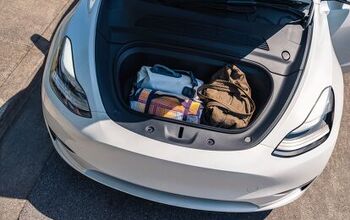
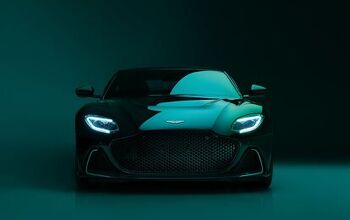
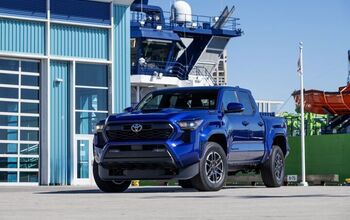


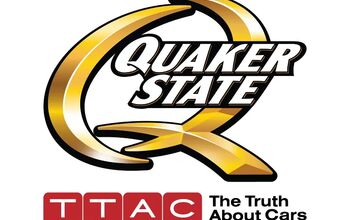
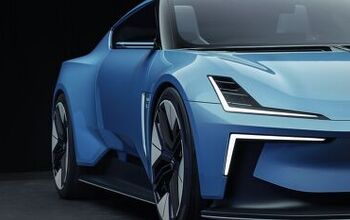
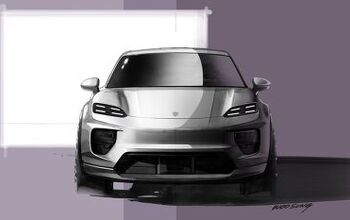



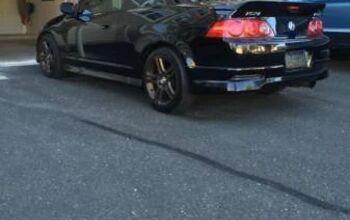
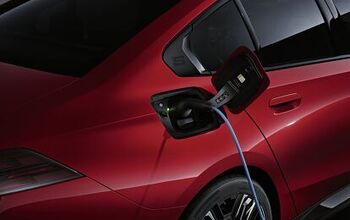
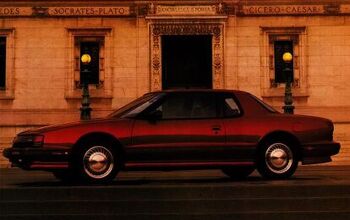
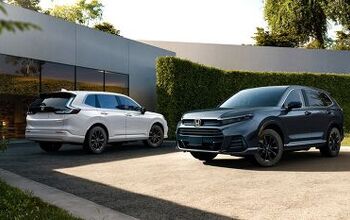
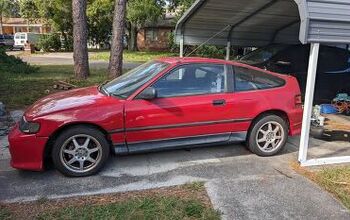
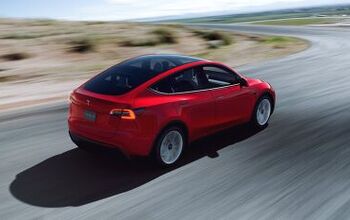

Comments
Join the conversation
One trick I've seen is to replace a capacitor in the circuit that controls the flashing of the turn signal. The system still pulls the lower current and so changes the blink rate, but with the different capacitor, the new blink rate matches the old. That said, I generally agree not to mess with such things.
Well, in spite of all those federal specifications, turn signals are harder to see now than they've been for decades. Compare the rear turn signals on an older car and new car. The older car's light had a very large plastic lens, probably rectangular. It shown brightly from a distance because it was reflective and the lens filtered out very little of the bulb's light. Most new cars have small lenses buried in bizarre, highly-styled arrangements that are harder to see because they're small, oddly-shaped, not reflective, and the lens is often so thick that it filters the light from the bulb. And, yes, the brake lights are often as poorly designed, especially the third brake light.